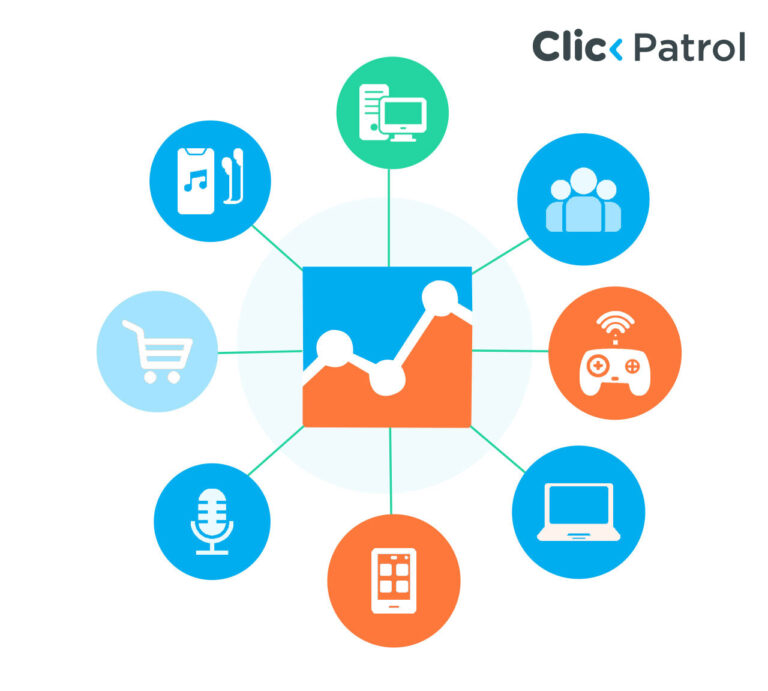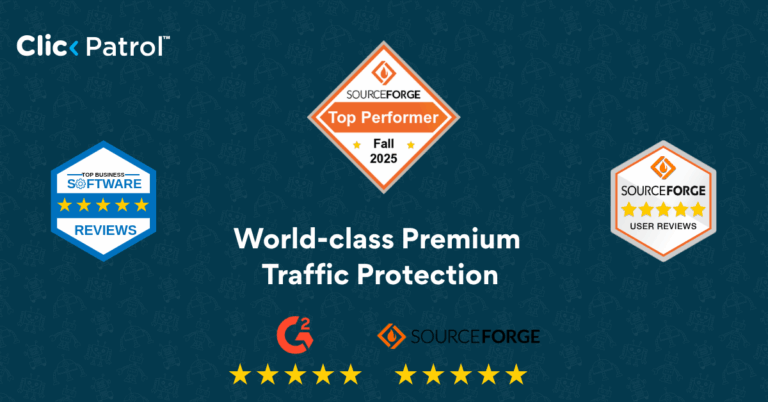
How to Stop Bot Attacks on Your Website
Abisola Tanzako | Jun 25, 2024

Table of Contents
- What is a bot attack?
- 5 common types of bot attacks
- How to stop bot attacks totally and prevent them on your website
- 1. Purchase a bot protection system.
- 2. Keep an eye on your traffic.
- 3. Blocked data center IPs
- 4. Disable older browsers & user agents
- Effective bot protection is not one size fits all
- FAQs
It’s no secret that the potential risks of cybercrimes have increased recently, with new bot attack vectors and threats appearing almost daily. Malicious bots enable many cybersecurity threats: content scraping, brute force attacks, denial of service, spam, fraud, and malware injection. These are just a few common bot attacks that could permanently harm your financial performance and brand reputation.
This prompts many to consider safeguarding against additional cybersecurity risks, such as brute force assaults. The most sophisticated malicious bots are highly skilled at mimicking human technology and behaviors, making identifying and distinguishing them from actual human users challenging. For instance, they can mimic human-like activities in web applications, such as seemingly random workflows, non-linear mouse movements, and other similar actions.
They can launch attacks from hundreds or even thousands of different IP addresses. Therefore, even while it can seem like a no-brainer to block bot assaults to safeguard your online apps and stop other cybersecurity dangers, it is not always easy. In this article, we will look at how to stop bot assaults on your website, along with some tips for preventing them in the future.
What is a bot attack?
For us to fully understand when we talk about bot prevention, it is crucial that we first define what bots, or internet bots, actually are. An internet bot is a software program or application that performs automatic operations or scripts over the internet. They usually perform repetitive, relatively uncomplicated activities far more quickly than a human could. For instance, a human user could take 30 seconds to fill out a form before they can submit it, whereas a bot designed just for this form can complete the same activity in an instant.
It’s crucial to remember that, despite their negative reputation stemming from their association with several cybersecurity risks, some trustworthy bots owned by Google or Facebook, for example, can be advantageous for your website. For instance, your website is indexed by Google’s crawler bot, making it possible to be ranked on the search engine results page (SERP). Therefore, if we still want people to be able to find your website on Google, you don’t want to prevent Googlebot’s activity.
Malicious or bad bots are created and used for malicious purposes, usually by hackers or online fraudsters. You aim to stop these malicious bots from attacking while enabling reputable traffic from good and human visitors. This may entail preventing hostile bots while maintaining genuine traffic.
5 common types of bot attacks
These are the typical cybersecurity attacks carried out by malicious bots, as well as typical warning signals and symptoms for each.
1. Web scraping
Web or content scraping is quickly extracting information and content from a website. Web scraping is a common task for good bots, and content scraping itself isn’t illegal. On the other hand, ticket scalping bots and related scrapers may cause issues. In general, web scraping can result in several problems, such as:
- If competitors steal your pricing data and use it to lower your rates,
- When a web scraper extracts confidential or secret data, you risk losing important information.
- It may strain the network and reduce the speed of your website.
- By republishing content that has been scraped, the attacker may cause duplicate content issues, which can outrank you in search engine results with your content.
Websites and businesses in price-sensitive industries, such as booking hotels or tickets, are particularly vulnerable to web scraping attacks. Competitors may, for instance, utilize bots to scrape your pricing data and undercut you; as a result, your competitor will rank highest on price comparison sites. Symptoms of a website-wide scraper bot assault include:
- Declining rates of conversion
- Competitors routinely outperform you
- Your content is being shared elsewhere.
- Inefficient website performance is an indication that excessive bandwidth is being used for heavy scraping
- Unexpected and unexplained traffic increases
- Inexplicable downtime
2. Brute force attacks
A brute force attack is an effort to “guess” the login credentials of a system or account by attempting an enormous number of possible combinations. Given an infinite number of attempts and an endless length of time, brute force attacks can always succeed since bots can input username/password pairings more quickly than humans.
Credential stuffing assaults are a type of brute force attack where a bot tries to log into other accounts using credentials that have been stolen and are usually sold on the dark web. For instance, if a hacker has access to a list of credentials obtained from a Google data leak, the hacker might attempt to access Facebook using that same credentials. Since people usually use identical passwords and email addresses on numerous websites, credential stuffing can lead to a surprisingly high success rate. A brute force attack on your website may look like this:
- An odd rise in unsuccessful login attempts
- An increase in customer account lockouts and login attempts
- An increase in chargeback requests (for online purchases)
3. Spam
As everyone knows, there are spam issues everywhere, and there are various ways that bots can try to distribute spam content. Typically, the bots register for free accounts on your website and then send spam messages to any areas (blog comments, forms, etc.) where your site permits. Various bots are flooding social media networks with material these days, making multi-platform bot avoidance even more necessary.
- Signs of a spam bot attack include:
- Unusual rise in the number of new accounts created
- A rise in complaints about spam
4. Credit card theft and related fraud
Like a brute force attack, bots can examine credit card details obtained to find missing data (CVV numbers, expiry date). If your website provides gift cards, malicious bots can try to steal money by demanding the balance of the gift cards, leading to depleted balances on users’ cards. Signs of a website carding bot attack:
- An increase in calls for customer support
- A rise in chargeback requests
- An increase in inquiries about gift card balances
5. DoS/DDoS
Bots that engage in denial-of-service attacks try to overload your server by repeatedly sending large requests. This can cause your website to lag or go offline wholly, preventing legitimate users from accessing it. Unintentional DDoS assaults are also possible. For instance, aggressive scraper bots may result in downtime by generating excessive requests even if they serve their purpose: to keep your website accessible.
It is crucial to ensure that you have sufficient DDoS protection. Symptoms of a bot attack using DDoS on your website:
- Traffic spikes on specific resources are increased
- An increase in complaints from clients
How to stop bot attacks totally and prevent them on your website
Now that we know how malicious bots can harm your website let’s discuss some practical solutions to prevent and avoid these bot attacks.
1. Purchase a bot protection system.
Investing in a suitable bot detection and protection software such as ClickPatrol for your website is the first step towards halting and avoiding bot attacks. With internal solutions and WAF rules, achieving “good enough” bot attack protection was still possible a few years ago. Currently, though, identifying rogue bots calls for quite specific knowledge. What qualities should a decent bot protection solution have? The response could vary depending on the risk profile, industry, and website infrastructure, but here are some points to consider
- Time for protection: If you are currently being attacked, your main goal is to stop the bot attack immediately. Instead of choosing a solution that needs to be proven through a protracted negotiating process before receiving assistance, look for one you can implement immediately.
- Quality of detection: Preventing bot attacks on your website is the primary function of a bot protection system. Test a few possible solutions concurrently on your traffic and request evidence from potential vendors regarding their detection efficiency.
- Non-intrusive style: A well-designed bot protection system shouldn’t require rerouting DNS or significantly modifying your online applications. Depending on the design of your server, “one-click” installation choices might even be available to you.
- Ease of use dashboard: Examine the dashboards of the alternatives you are considering. To what extent is it straightforward (or hard) to decipher your bot traffic patterns or detect traffic from bots? How simple (or complex) is it to turn security on and off, allow-list partner bots, etc.?
The ideal solution should entirely relieve you of the responsibility for bot management, allowing you to stop worrying about how to prevent bot attacks on your website in the future. However, if you still need to discover the ideal solution for your website, here are some strategies you might use till then.
2. Keep an eye on your traffic.
Keep an eye out for the following crucial metrics on your site’s traffic:
- Traffic spikes: Any sudden traffic increases lasting less than a week may indicate the presence of bot activity. A few exceptions exist to this rule, such as when a new product is launched, traffic spikes should be expected.
- Suspicious sources: Bot traffic typically originates from direct traffic (i.e., not from Google searches or ad clicks) with new user agents and sessions. Repetitive requests from a single IP address are a dead giveaway for bot traffic.
- Bounce rate: An increase in bounce rate may indicate that bot visitors are only interested in completing a single activity on your website before disappearing.
- Overall performance of the website: If you experience a noticeable lag on your website, it may indicate that unusual bot activity is burdening your servers.
3. Blocked data center IPs
While most more experienced attackers have shifted to more complex networks and servers, many less experienced cybercriminals may still rely on hosting and proxy servers that have been widely used in previous attacks and are easily blocked. Obtain a list of known data center IPs and block or Captcha requests coming from those IPs. This method is less effective and has a higher chance of false positives (actual users being blocked) than a genuine bot prevention solution, but it might be worth a try for a temporary fix.
4. Disable older browsers & user agents
The user-agent lists in many readily available bot scripts and tools must be updated. Once more, this won’t stop skilled attackers or sophisticated bots, but it is a recommended practice to prevent less experienced bots from targeting your website. Disabling or prohibiting outdated browser versions is advisable. Browser versions over three years old should generally be blocked; those under two can be CAPTCHA’d.
Effective bot protection is not one size fits all
Static or passive rules are no longer sufficient to identify and reduce bot traffic. A good bot management solution that can identify and block even the most skilled attackers will cost you money to effectively stop bot attacks on your website and stop them in the future. A good bot protection solution should offer unique, well-managed attack responses tailored to each type of bot attack.
A well-chosen bot management solution should enable enough cost savings for a decent-sized website (lower infrastructure costs, less time spent on mitigating attacks and customer complaints, etc.) to make the ROI of mitigating bots evident.
FAQs
Q.1 Why is it crucial to stop bot attacks?
Bot attacks must be stopped to preserve consumer confidence, secure sensitive data, and keep websites operating smoothly. Bot attacks can destroy a website’s integrity, cause financial losses, and harm one’s reputation.
Q.2 How can I monitor bot activity on my website?
You can monitor bot activity by analyzing server logs, keeping an eye on traffic trends, and using programs like Google Analytics, which are all necessary for tracking bots on a website. Search for odd user agent strings, IP addresses, and behavior patterns to detect and reduce bot activity.
Q.3 Are web bots illegal?
Not every online bot is illegal. Like search engine crawlers, good bots have useful functions. Malicious bots, on the other hand that carry out illicit tasks like data theft, hacking, or service disruption are prohibited by law and breach cybersecurity regulations.





